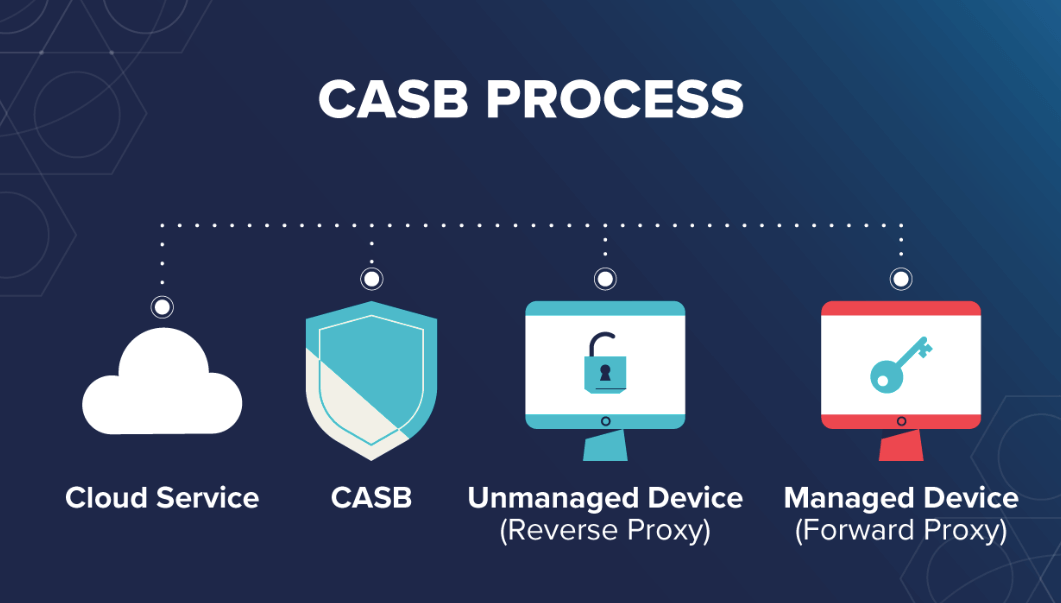With the growth of remote work and bring-your-own-device (BYOD) policies, IT teams need more support to maintain visibility into their cloud deployments. Top CASB solution discover and classify cloud-based applications, helping organizations ensure that data moving into and out of the cloud is secure.
They also help detect unsanctioned applications, aka “shadow IT,” and encrypt traffic between users and cloud systems. This functionality is critical for reducing exposure to threats.
Security
CASB is an important addition to a security stack, complementing and building upon solutions that are already in place. It adds to an organization’s visibility of cloud apps and SaaS usage by allowing security teams to see the use of these applications, even when it is no longer under the jurisdiction of the company network or organizational policies.
Visibility also enables granular security policy management and implementation. With this, IT can control cloud data access by identifying users and devices and applying rules such as credential mapping, single sign-on (SSO), device posture monitoring, threat protection, and more.
CASB solutions can also help organizations meet compliance requirements, especially those related to data storage and transfers. They can scan for gaps in policies and identify violations, such as those caused by leaking sensitive information to outside parties via public links, or insider threats, such as accidental or intentional theft of critical intellectual property like engineering designs, customer sales records, and other business data from SaaS applications by employees who are planning to leave the company.
A CASB solution should offer integration with other security infrastructures to optimize the effectiveness of those solutions. For example, many CASBs integrate with next-generation firewalls (NGFWs) to improve performance and enhance the entire infrastructure’s visibility. In addition, CASBs can work with third-party MDM solutions to detect managed and unmanaged devices and enforce different policies for each.
Compliance
Enterprises adopting cloud applications must maintain visibility and control over sensitive data moving between their on-premises networks and the public internet. This can be accomplished through a CASB solution with security features and technologies like DLP, access control, information rights management, and tokenization.
CASB solutions can protect against compromised credentials and other malicious activities like ransomware. They can observe and register usage patterns to establish a baseline. Then, any deviation from the norm triggers a notification to help organizations respond quickly to threats. Additionally, CASBs can use threat intelligence and ML to detect anomalous behavior that may indicate a breach or malware.
Finally, a CASB can prevent employees from accessing unsanctioned or unknown apps. This is an important aspect of user security because unapproved applications are often used to store and share sensitive information. Furthermore, unsanctioned applications pose significant risks to the organization as they can be used outside the corporate network.
Implementing a CASB solution cannot be overstated, especially given the increased frequency of breaches caused by hacking and insider threats. These solutions help businesses keep their sensitive data safe from theft and loss, even when embracing time-saving and productivity-enhancing cloud applications. As such, organizations must deploy a next-generation CASB solution in their SASE architecture.
Visibility
A CASB must be able to analyze and identify all the activities in an enterprise cloud environment. This visibility can help organizations avoid security risks and protect sensitive data from malware, phishing, and distributed denial-of-service (DDoS) attacks. It can also identify shadow IT devices and unauthorized data usage.
Visibility is a primary reason businesses choose a CASB, especially when dealing with unsanctioned cloud applications, known as Shadow IT. Employees may use these apps without IT knowledge on their work laptops, personal smartphones, or IoT devices. This can be a huge threat to the organization. It can even result in an accidental or malicious leak of sensitive information.
In addition to identifying and blocking these unauthorized applications, a good CASB solution should offer protection capabilities such as multi-factor authentication (MFA) and granular activity analytics. It should also support mobile and endpoint access control and have the ability to integrate with NGFWs and other security solutions. It should also be able to distinguish between managed and unmanaged devices.
Another important function of a CASB is its ability to prevent regulatory compliance violations. For example, a CASB can alert administrators to security issues threatening compliance with regulations such as PCI or GDPR. This can help companies avoid fines and other penalties for non-compliance.
Scalability
With the exponential growth of cloud usage, enterprises must rely on more than security tools. To keep up with the dynamic threat landscape, CASBs must be able to scale quickly. A CASB should also be able to integrate with other security technologies, such as secure web gateways (SWGs) and data loss prevention (DLP) solutions.
Visibility and access control are critical functions for CASBs, as they help organizations identify shadow IT and other risky applications across their network. Look for a solution to detect the full list of third-party connected apps, including their name, version number, and installation locations. It should also provide the ability to connect directly with an individual application. This allows for real-time identification of sensitive information and the option to disconnect from risky applications.
Another key feature to consider is the ability to block data leaving the enterprise. Advanced CASBs can protect against data exfiltration by analyzing user behavior to identify deviations from the normal. For instance, if a normally insignificant user suddenly uploads dozens of gigabytes to an unmonitored repository, this could be a sign of a breach in progress and should raise suspicions.
Additionally, a CASB should be able to enforce policies and extend on-premises security policies to the cloud. For example, it should be able to implement SWG-style authentication policies on SaaS applications and encrypt data in transit and at rest in the cloud. This will prevent sensitive data from being sucked out of the organization through breaches and other threats.
